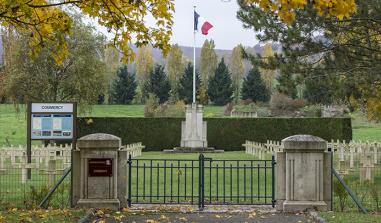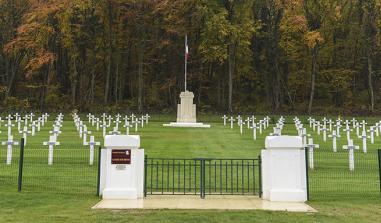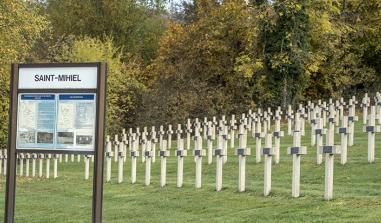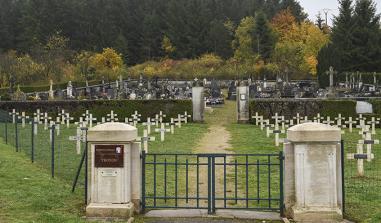The destroyed Village of Vaux-devant-Damloup

Vaux in 1918. Source: ECPAD
Located at the foot of the battlefields, it takes its name Vaux from the village destroyed by the battle of Verdun in 1916, and the village of Damloup a few km away.
History
Vaux-devant-Damloup takes its name from the villages of Vaux and Damloup. Vaux takes its name from its position in a steep-sided, wooded gorge, on the "Vaux" brook, which has many sources upstream of the village and eventually feeds into the Orne. Before the Revolution, this land belonged to the Cathedral of Verdun, under the old seigniorial canon law. Damloup was first mentioned in a bull from Pope Leo IX in 1049, under the name Domnus Lupus (or Dominus Lupus), taking its name from its patron saint, Saint-Loup, traditionally celebrated on the first Sunday in August. The church of Saint-Loup was built in 1766. During the First World War, Damloup was a victim of the battle of Verdun in 1916, partly due to its location at the foot of the battlefield, and especially Vaux Fort. The village was completely destroyed. After the war, consideration was given to including Damloup among the 9 destroyed villages, but the wishes of the population that returned from exodus won the day: the village was rebuilt some metres lower than its previous location, as was the Church of Saint-Loup, in 1928. [list]in 1803, the village numbered 291 inhabitants [list]in 1851, 407 inhabitants [list]in 1901, 224 inhabitants [list]in 1913, 287 inhabitants
Practical information
55400
Vaux-devant-Damloup
Accessible toute l'année







